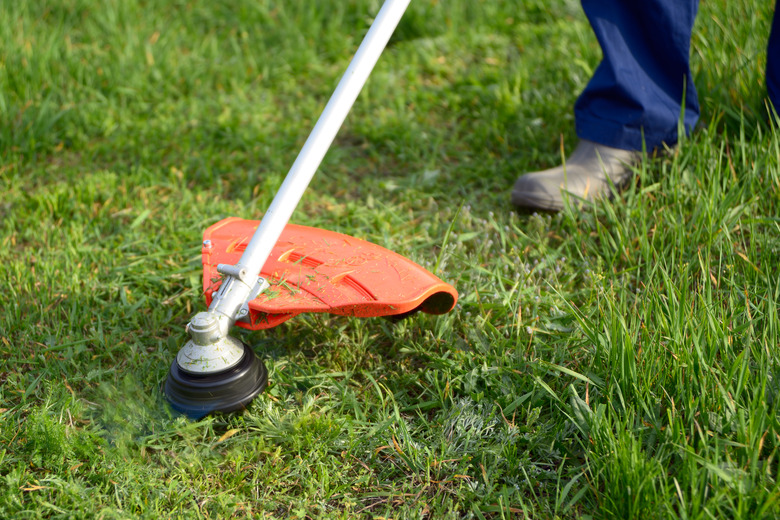Why Is My String Trimmer Leaking Fuel?
We may receive a commission on purchases made from links.
Is your string trimmer leaking fuel? The fuel in your weed trimmer must flow uninterrupted from the tank to the carburetor, from the carburetor to the cylinder, and all excess fuel must return to the tank. This cycle needs to remain completely airtight, otherwise fuel will start leaking from either the broken seal or from another area in the fuel system. You must find the leak immediately as trying to operate with a gas leak poses a fire threat.
Tip
A string trimmer can leak fuel due to issues with the fuel tank, broken gas lines, seal issues or carburetor problems. Finding the source of the leak and fixing it quickly is important for using the string trimmer safely.
Fuel Tank Problems
Fuel Tank Problems
The fuel cap is the source of a lot of leaks. Sometimes the fuel may look like it's leaking from somewhere else, even when the cap is to blame as it's flinging fuel around from the engine vibrations.
Inside the cap is a rubber seal, which can get lost at a refueling stop, causing gas to start leaking. Puncture holes can also come from flying rocks from the cutting head or if you dropped the trimmer against a sharp object. And over time, the rubber will lose elastacity and begin to degrade, which prevents a tight seal. Clean the fuel tank and engine with soap, water and a cleaning rag to help you better determine the source of your leak.
Broken Gas Lines
Broken Gas Lines
As the fuel leaves the tank it gets sucked up the main gas line. This rubber hose can dry out, become brittle, and eventually crack over time, especially if the gas lines are more than a couple seasons old. The purge line, with the primer bulb, can also experience the same problems. Any holes in these lines will result in a fuel leak. Since these rubber hoses break down so quickly, replace them every season to ensure the proper flow of fuel.
Fuel Line Sealing Problems
Fuel Line Sealing Problems
The fuel lines need to be sealed at the tank and the carburetor. On the tank side, two rubber grommets are usually used to keep the fuel tank and hoses airtight. If these grommets dry out and crack, they may expose a small hole in between the tank and fuel lines. When you replace those fuel lines, check the condition of the rubber grommets.
On the carburetor side, the hoses attach to the intake and outtake valves. These seals can also get ruptured from dropping the trimmer, improper fuel line replacement, or they just wear out over time. Before starting a gas string trimmer, use only your fingers to push these lines into the carburetor and use a press fluid to ensure an airtight seal.
Carburetor Operating Issues
Carburetor Operating Issues
If the carburetor can't measure the fuel, mix it with air, and then pump it off in both directions, fuel will back up in the system and may leak in the carburetor or elsewhere, like the gas lines. Carburetors need a cleaning usually every two to three seasons and will need to be disassembled if you're experiencing running problems with your gas leak. Properly seat the inlet needle on the lever arm and clear the jets and bores of obstructions. Proper string trimmer storage also protects the carburetor and other components.
